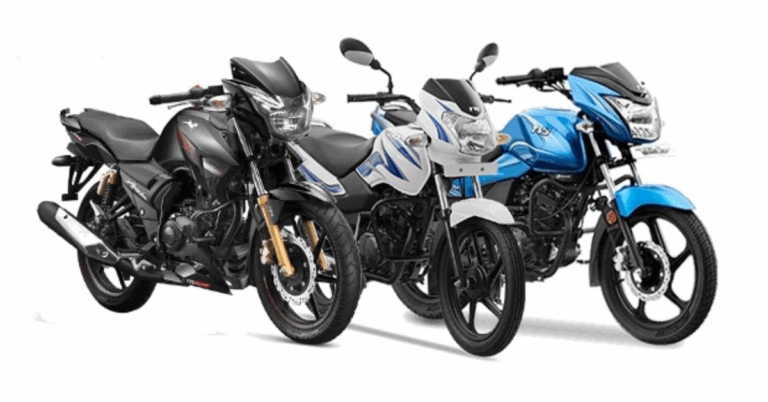Choosing the Right Industrial Fan for Singapore’s Hot, Humid Climate
If you run a warehouse, factory, or large commercial facility, you’ll know how oppressive Singapore’s heat and humidity can become—especially in enclosed spaces with heavy machinery, high ceilings, or constant human traffic. That’s where an Industrial Fan Singapore can make all the difference: pushing large volumes of air, reducing hot spots, lowering reliance on air-conditioning, and creating a healthier, more comfortable working environment. In this article, we will explore what makes industrial fans ideal for Singapore’s conditions, the different types available, key considerations when selecting one, installation tips, cost and energy implications, and best practices for upkeep.
Why Industrial Fans Are Crucial in Singapore
Singapore’s climate is characterized by high temperatures and humidity year-round, typically between 25 °C and 32 °C, and relative humidity often above 70 %. In such an environment, enclosed or semi-enclosed industrial spaces can quickly become stifling, leading to worker fatigue, lower productivity, higher cooling costs, and challenges in controlling air quality.
An industrial fan in Singapore is more than just a breeze maker; it is a critical ventilation and circulation tool that helps:
-
Even out temperature stratification — In high-ceiling spaces, warm air accumulates near the roof while the floor remains cooler. A well-designed industrial fan can drive warm air down or mix the layers, reducing the temperature gradient.
-
Improve perceived comfort — Even slight air movement increases convective heat loss from skin, helping people feel cooler without dropping thermostat settings drastically.
-
Reduce cooling load — By facilitating better air circulation, industrial fans reduce the workload on air-conditioning systems and allow them to run more efficiently or at lower settings.
-
Ventilate and remove stagnation — In manufacturing or production areas with fumes, heat from machines, or localized dust, fans help move air and prevent pockets of stagnant or poor air quality.
Because of these benefits, businesses across Singapore are increasingly turning to specialized industrial fans rather than relying solely on conventional ceiling or pedestal fans.
Types of Industrial Fans Suitable for Singapore
When shopping for an industrial fan in Singapore, you’ll typically come across several categories, each with distinct advantages and best-use cases. Below is a breakdown of common types and their relevance in Singaporean settings:
1. High Volume Low Speed (HVLS) Ceiling Fans
HVLS fans are large-diameter ceiling fans that move vast quantities of air at low rotational speed. Their slow-moving, wide sweeps create a gentle, consistent airflow that covers large floor areas. These fans excel in warehouse spaces, logistics hubs, manufacturing halls, and large showrooms. Their lower speed minimizes noise and improves safety—particularly important when ceilings are high or open.
2. Industrial Ceiling Fans (Standard / Mid-Sized)
These are more traditional ceiling-mounted industrial fans with more compact diameters but designed for robust performance. They are ideal for semi-industrial spaces like large retail floors, workshop aisles, or mezzanine levels. Their advantage lies in delivering directional airflow in areas that may not require the sweeping coverage of an HVLS system.
3. Wall-Mounted Industrial Fans
For areas where ceiling mounting is impractical—due to height, structural constraints, or existing layout—wall-mounted industrial fans (or “spiderfan” types) can be highly effective. They deliver directional airflow across aisles, down corridors, or into specific work zones. Many wall-mounted fans are rugged, corrosion-resistant, and suitable for humid or semi-outdoor settings.
4. Mobile / Portable Industrial Fans
In flexible or multipurpose spaces—e.g., warehouses with dynamic layouts, event halls, or workshops with shifting operations—a mobile or portable industrial fan offers adaptability. You can reposition them as needed, and many systems offer variable speed control, oscillation, or tilt for localized comfort.
Key Considerations in Selecting an Industrial Fan (Singapore Context)
Because the tropical conditions in Singapore present unique challenges, here are key factors you should keep top of mind:
Ceiling Height & Space Dimensions
-
For very tall ceilings (10 m and above), HVLS fans are ideal, given their ability to move air across broad vertical spans.
-
Ensure fan blades and mounting hardware have clearance from structural beams, lighting fixtures, or overhead cranes.
Airflow Requirements (CFM / m³/h & Air Changes)
-
Calculate the required airflow (in CFM or cubic metres per hour) based on space volume and desired air changes per hour.
-
Consider localized hotspots, heavy machinery zones, or congested workstations that might need directional or supplemental airflow.
Noise Constraints
-
In showrooms or customer-facing areas, low-noise fans are essential. HVLS systems typically perform well here.
-
Fan manufacturers often provide noise specifications at different speeds; compare dB ratings.
Corrosion & Durability
-
Singapore’s humid, salt-laden air (especially in coastal zones) demands corrosion-resistant materials like coated aluminum or stainless steel components.
-
Look for ingress protection (IP) ratings and sealed motor housings.
Power Consumption & Efficiency
-
One of the biggest advantages of a well-chosen industrial fan is energy saving. Since these fans move large volumes of air at low speeds, the energy per cubic metre of airflow is quite efficient.
-
Incorporate variable speed drives (VSD) or controllers to modulate performance as needed during cooler periods or lower loads.
Safety & Compliance
-
Ensure blade guards, safety cables, and emergency shutdown features are present.
-
Check that the installation complies with Singapore’s building codes, fire safety regulations, and workplace safety standards.
Maintenance Accessibility
-
Fans should be designed for ease of inspection, cleaning, and servicing.
-
Access ladders, catwalks, or lifting mechanisms should be considered in installation planning.
Installation Best Practices
Proper installation is key to performance and longevity. Here are tips adapted for Singaporean climate and building norms:
-
Site Assessment
Conduct a walk-through or examine floor plans—assess obstructions, height clearances, and structural supports. Place fans to avoid interfering with cranes, piping, or lighting. -
Mounting and Vibration Control
Use vibration-isolating mounts where needed. Secure mounting points into structural members to handle torque loads. -
Blade Alignment & Balancing
Blade alignment must be precise to avoid wobble and premature wear. Many reputable suppliers pre-balance blades or provide balancing kits. -
Electrical Wiring & Controls
Use sealed conduits and moisture-tolerant materials. Interface with building management systems (BMS) or provide dedicated controllers for variable speed. -
Test Run and Fine-Tuning
After installation, test at various speeds and adjust fan angles, blade pitch (if adjustable), and airflow direction. Monitor for vibration, noise, or uneven flow. -
Safety Clearance & Guards
Verify adequate clearance for personnel, machinery, and vertical reach. Add safety guards, cables, or rails as needed, especially in public-facing or accessible zones.
Cost, Energy & ROI Considerations
One of the most compelling arguments for choosing industrial fans in Singapore is the return on investment (ROI) when carefully selected and installed.
Initial Investment vs Long-Term Savings
-
High-quality industrial fans may require higher upfront costs but pay off through energy savings and reduced HVAC loads over years.
-
A fan that raises perceived comfort by even 2–3 °C can allow raising thermostat settings in air-conditioned spaces, saving on cooling energy.
Power Use Analysis
-
Calculate power draw (kW) at different speeds and forecast running hours daily. Compare that with the energy saved by reducing air-conditioning runtime.
-
Many industrial fans use motors and controllers optimized for efficiency; newer models may even qualify for energy-efficiency incentives.
Maintenance and Operating Expense
-
Budget for periodic inspections, cleaning, bearing lubrication or replacement, blade checks, and motor servicing.
-
Over time, the efficiency of a dirty or misaligned fan drops—keeping it maintained preserves savings.
Payback Period
-
A carefully selected industrial fan system often pays for itself in 1–3 years, depending on facility scale and load.
-
Beyond payback, continued savings contribute directly to lower operational expenses.
Best Practices for Operation & Maintenance
To maximize the lifespan and value of your industrial fan system in Singapore, follow these guidelines:
-
Scheduled cleaning: Remove dust, grime, and grime accumulation on blades and motor housings regularly. This helps maintain balance and airflow.
-
Routine inspection: Check fasteners, mountings, motor integrity, bearings, and safety cables. Tighten or replace if necessary.
-
Lubrication: Use recommended lubricants for bearings and moving parts at intervals specified by manufacturer.
-
Seasonal adjustment: In Singapore there isn’t a true “winter,” but during cooler or non-peak months, you might reduce fan speed or duty cycles.
-
Record keeping: Maintain logs of service, part replacements, and energy consumption to detect anomalies or degradation.
-
Operator training: Ensure that maintenance personnel understand safety procedures, isolation protocols, and manufacturer instructions.
Use Cases & Real-World Applications in Singapore
Here are a few example scenarios of how industrial fans are used effectively in Singaporean facilities:
-
Warehouses: To supplement air-conditioning, large HVLS fans push cool air downward and maintain circulation in spaces with high ceilings, lowering humidity build-up around stored goods.
-
Manufacturing plants: Heat from machines or ovens is dispersed using strategically placed ceiling or wall fans, reducing ambient temperature near workstations.
-
Distribution centers: In fast-moving logistics environments, airflow helps maintain comfort for workers walking long aisles, loading docks, or conveyor zones.
-
Showrooms & mega-stores: Gentle ceiling airflow helps convey a cool and welcoming environment without creating harsh drafts on display products or customers.
-
Indoor sports courts / fitness complexes: To drive out humidity, improve ventilation, and maintain a cooler environment for athletes and gymgoers.
Choosing a Reliable Industrial Fan Supplier in Singapore
Given the challenging climate and demanding usage, the choice of supplier is almost as important as the fan specification itself. Look for a supplier who offers:
-
Local knowledge and support tailored to Singapore’s conditions and regulatory environment.
-
Comprehensive services including site assessment, load calculation, customization, installation, and post-sales support.
-
Quality assurance & durability guarantees with corrosion protection, robust materials, and warranty coverage.
-
Transparent pricing and consultation rather than pushy upselling—providing options based on your actual needs.
-
Spare parts availability locally so that your downtime is minimized during repairs or maintenance.
Conclusion
In Singapore’s tropical, humid environment, selecting and installing an industrial fan Singapore solution is a strategic investment—not just a comfort add-on. When properly chosen and maintained, industrial fans improve air quality, reduce cooling loads, and enhance worker productivity across industrial and commercial spaces.
Whether your facility requires sweeping coverage via HVLS ceiling fans, directional wall-mounted units, or flexible mobile systems, prioritize durability, corrosion resistance, noise control, and serviceability. Work with experienced local suppliers who understand the challenges of Singapore’s climate and building landscape. With the right industrial fan system in place, your facility won’t just survive the heat—it can thrive in it.







